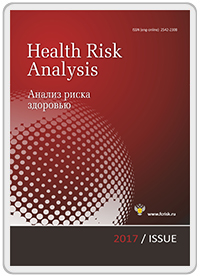Sanitary-educational activities as an effective method of nonspecific plague prevention in the natural plague focus in the kosh-agach district of the Republic of Altai
S.V. Balakhonov1, E.S. Kulikova1, A.I. Mishchenko2, V.M. Korzun1, A.V. Rogaleva1, S.M. Lyashenko1, A.A. Itashev2, S.L. Sarikova3, N.B. Kalybayeva4
1Irkutsk Anti-Plague Research Institute, 78 Trilissera St., Irkutsk, 664047, Russian Federation
2Altai Anti-plague Station, 2 Zavodskaya, Gorno-Altaisk, 649002, Russian Federation
3Federal Service for Surveillance over Consumer Rights Protection and Human Wellbeing, Altai Republic Regional Office, 173 Kommunisticheskii Av., Gorno-Altaisk, 649002, Russian Federation
4Kosh-Agach district hospital, 3 Meditsinskaya, Kosh-Agach, 649780, Republic of Altai, Russian Federation
The Altai Mountains are an area of ecological tourism with high potential for further development. At the same time, intensive epizootics of plague are typical for the region including those registered in close proximity to settlements and shepherds’ camps raising likelihood of potential contacts between people and plague vectors and carriers. Potential hazard of plague cases among the population persists in this area and this can result in serious epidemiological complications. From 2010 to 2024, 397 plague microbe strains, 182 Yersinia pestis ssp. pestis and 215 Y. pestis ssp. central asiatica bv. Altaica, were isolated and investigated in the Gorno-Altaisk high-mountain natural plague focus. After cases of the infection were identified in humans (2014–2016), the coverage of the sanitary-educational work increased considerably. Overall, 282 lectures were delivered to the population, more than 15 thousand leaflets and booklets were handed out, and more than 6630 talks were organized over 2016–2022. Annually, sanitary-educational activities are organized for an audience between 20 and 63 thousand people.
The aim of this study was to assess effectiveness of sanitary-educational activities aimed at informing people about risk factors associated with living in a natural plague focus.
The study method was a survey conducted among the regional population using a specifically designed questionnaire. Totally, 1650 residents of the Kosh-Agach districts, including 135 shepherds and their family members, took part in the survey; the district was selected as a plague-endemic area.
According to the survey results, people from the Kosh-Agach district of the Altai Republic (more than 90 % of the respondents) were established to be well aware about risk factors associated with living in a natural plague focus as well as the infection sources, namely, plague vectors and carriers. Most people who lived in this endemic area had means of communication and transportation necessary for applying for medical aid and were ready to inform healthcare workers in case plague was suspected or the first plague signs were manifested in them or their friends or acquaintances.
- Transgranichnyi Sailyugemskii prirodnyi ochag chumy [Transborder Sailugem natural plague focus]. In: S.V. Bala-khonov, V.M. Korzun eds. Novosibirsk, 2022, 248 p. (in Russian).
- Balakhonov S.V., Korzun V.M., Chipanin E.V., Afanasev M.V., Mikhailov E.P., Denisov A.V., Fomina L.A., Eshelkin I.I. [et al.]. Mountain-Altai natural plague focus: retrospective analysis, epizootological monitoring, current state. In: S.V. Balakhonov, V.M. Korzun eds. Novosibirsk, Nauka-Tsentr Publ., 2014, 272 p. (in Russian).
- Balakhonov S.V., Popova A.Yu., Mishchenko A.I., Mikhailov E.P., Ezhlova E.B., Demina Yu.V., Denisov A.V., Rozhdestvensky E.N. [et al.]. A Case of Human Infection with Plague in the Kosh-Agach Region of the Republic of Altai in 2015. Communication 1. Clinical-Epidemiological and Epizootiological Aspects. Problemy osobo opasnykh infektsii, 2016, no. 1, pp. 55–60. DOI: 10.21055/0370-1069-2016-1-55-60 (in Russian).
- Balakhonov S.V., Korzun V.M., Kosilko S.A., Mikhailov E.P., Shchuchinov L.V., Mishchenko A.I., Zarubin I.V., Rozhdestvensky E.N., Denisov A.V. Actual Aspects of Epidemiological Well-Being Support Anti-Plague for Population in Altai Republic. Epidemiologiya i vaktsinoprofilaktika, 2016, vol. 15, no. 4, pp. 42–48. DOI: 10.31631/2073-3046-2016-15-4-42-48 (in Russian).
- Korzun V.M., Balakhonov S.V., Kosilko S.A., Mikhailov E.P., Mishchenko A.I., Denisov A.V., Rozhdestvensky E.N., Chipanin E.V. [et al.]. Gorno-Altai Natural Plague Focus Epizootical and Epidemical Activity in 2012–2016. Epidemiologiya i vaktsinoprofilaktika, 2017, vol. 16, no. 1, pp. 36–38. DOI: 10.31631/2073-3046-2017-16-1-36-38 (in Russian).
- Kutyrev V.V., Popova A.Yu., Ezhlova E.B., Demina Yu.V., Pakskina N.D., Shchuchinov L.V., Mikhailov E.P., Mishchenko A.I. [et al.]. Infection of an Individual with Plague in the Gorno-Altaisk High-Mountain Natural Focus in 2014. Communication 1. Epidemiological and Epizootiological Peculiarities of Plague Manifestations in the Gorno-Altaisk High-Mountain (Sailyugemsky) Natural Plague Focus. Problemy osobo opasnykh infektsii, 2014, no. 4, pp. 9–16. DOI: 10.21055/0370-1069-2014-4-9-16 (in Russian).
- Balakhonov S.V., Schuchinov L.V., Mischenko A.I., Matrosov A.N., Denisov A.V., Rozhdestvensky E.N., Korzun V.M., Kosilko S.A. [et al.]. Organization of preventive, anti-epidemic actions to decrease risks of epidemic situation complications for plague in Republic Altai. Zhurnal mikrobiologii, epidemiologii i immunobiologii, 2018, no. 6, pp. 85–94 (in Russian).
- Popova A.Yu., Balakhonov S.V., Shchuchinov L.V., Matrosov A.N., Mikhaylov E.P., Mishchenko A.I., Denisov A.V., Shefer V.V. [et al.]. Organization of plague control and prevention measures on the territory of Kosh-Agach district of the Altai Republic and estimation of their effectiveness. Infektsionnye bolezni, 2018, vol. 16, no. 4, pp. 5–15. DOI: 10.20953/1729-9225-2018-4-5-15 (in Russian)
- Jones T.L., Baxter M.A.J., Khanduja V. A quick guide to survey research. Ann. R. Coll. Surg. Engl., 2013, vol. 95, no. 1, pp. 5–7. DOI: 10.1308/003588413X13511609956372
- Alderman A.K., Salem B. Survey research. Plast. Reconstr. Surg., 2010, vol. 126, no. 4, pp. 1381–1389. DOI: 10.1097/PRS.0b013e3181ea44f9



 fcrisk.ru
fcrisk.ru

